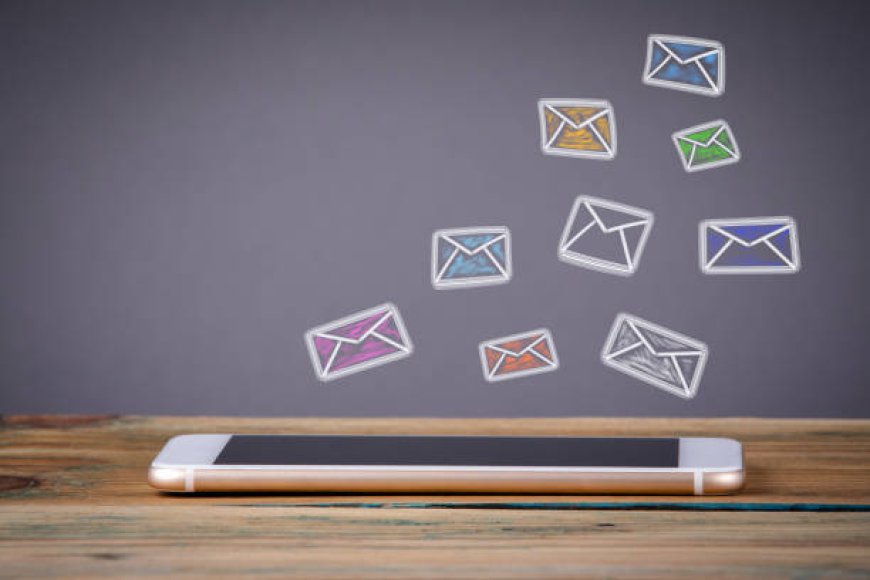How to Maintain Email Deliverability: Tips and Tools
email newsletter design newsletter design Find Newsletter Templates
Email deliverability is a crucial factor for the success of any email campaign. High deliverability ensures that your emails reach your recipients' inboxes rather than getting lost in the spam folder. Poor email deliverability can significantly diminish the effectiveness of your email marketing efforts, impacting your ability to communicate with potential customers.
This guide will explore the importance of maintaining email deliverability, common mistakes that can harm it, strategies to avoid these pitfalls, and how tools like Boost Inbox can help improve your email deliverability.
The Importance of Maintaining Email Deliverability
Email deliverability refers to the ability of an email to successfully reach the intended recipient's inbox. It’s more than just sending an email; it’s about ensuring it lands where it should, avoiding spam filters, and being opened by the recipient. Here’s why maintaining high email deliverability is vital:
- Maximized Reach: Effective deliverability ensures that your message reaches the maximum number of recipients.
- Higher Engagement: Emails that make it to the inbox have a better chance of being opened, read, and acted upon.
- Better Reputation: High deliverability rates help maintain a good sender reputation with Internet Service Providers (ISPs).
- Increased ROI: When your emails are delivered and engaged with, you see better returns on your email marketing investments.
Common Mistakes That Can Harm Email Deliverability
To maintain good email deliverability, it’s important to avoid common mistakes that can negatively impact it. Here are some key pitfalls to watch out for:
1. Purchasing Email Lists
Buying email lists might seem like a quick way to grow your contact base, but it often leads to poor deliverability. Purchased lists typically contain outdated or irrelevant email addresses, which can result in high bounce rates and spam complaints.
- Low Engagement: Recipients who did not opt-in are less likely to engage with your emails.
- Spam Complaints: Sending emails to people who haven’t consented can lead to spam reports, damaging your sender reputation.
2. Sending to Inactive Addresses
Continuing to email addresses that haven’t engaged with your messages over time can harm your deliverability. ISPs monitor engagement levels and may start filtering your emails as spam if they see consistently low engagement.
- High Bounce Rates: Inactive addresses may become invalid over time, leading to hard bounces.
- Lower Open Rates: Emails sent to inactive users are unlikely to be opened, which signals poor engagement to ISPs.
3. Low Engagement Rates
Low engagement rates indicate that your recipients aren’t finding your emails valuable or relevant. This can be due to various factors, including irrelevant content, poor timing, or frequency of emails.
- Decreased Inbox Placement: ISPs prioritize emails from senders with high engagement rates.
- Reputation Damage: Consistently low engagement can harm your sender reputation, leading to more of your emails being marked as spam.
Strategies to Avoid These Mistakes
Improving your email deliverability involves adopting best practices that ensure your emails are well-received by ISPs and your audience. Here are some effective strategies:
1. Using Email Verification Tools
Email verification tools help you clean your email list by removing invalid or risky addresses. This reduces bounce rates and ensures you’re only sending emails to legitimate, active addresses.
- Reduce Bounces: By verifying email addresses before sending, you can avoid hard bounces and maintain a healthy list.
- Improve Quality: Verification tools help you maintain a list of valid, high-quality contacts.
2. Segmenting Email Lists
Segmenting your email list involves dividing your contacts into smaller groups based on specific criteria, such as demographics, past behavior, or engagement levels. This allows for more targeted and relevant messaging.
- Higher Relevance: Tailored messages are more likely to resonate with specific segments of your audience.
- Improved Engagement: Segmented emails tend to have higher open and click-through rates compared to non-segmented emails.
3. Personalizing Email Content
Personalized emails perform better than generic ones. Use the recipient’s name, refer to past interactions, or tailor content to their preferences to make your emails more engaging.
- Increase Open Rates: Personalized subject lines and content can lead to higher open rates.
- Boost Engagement: Recipients are more likely to engage with content that feels relevant and personalized.
How Boost Inbox Helps Improve Email Deliverability
Boost Inbox is an invaluable tool for enhancing email deliverability through effective email warm-up strategies. By automating the process of gradually increasing email sending activity, Boost Inbox ensures that your emails are recognized as trustworthy by email providers. This approach significantly reduces the risk of your emails landing in spam folders, thereby maximizing visibility and engagement with recipients.
With Boost Inbox, you can monitor your inbox reputation with detailed analytics, observing firsthand how your emails transition from potential spam to successfully reaching intended inboxes. Whether you're a business looking to increase sales or an individual optimizing outreach efforts, Boost Inbox streamlines the email warm-up process, making it accessible and efficient for any email provider you use.
Conclusion
Maintaining high email deliverability is essential for the success of your email marketing campaigns. By avoiding common pitfalls such as purchasing email lists, sending to inactive addresses, and experiencing low engagement rates, you can safeguard your sender reputation and ensure that your messages reach their intended recipients. Adopting best practices like using email verification tools, segmenting your email lists, and personalizing your content can significantly improve engagement and ROI.
Tools like Boost Inbox further enhance deliverability by automating the email warm-up process, ensuring your emails land in inboxes and not spam folders. With these strategies in place, you can maximize reach, increase engagement, and ultimately drive the success of your email marketing efforts.


 fatimarmccoy
fatimarmccoy